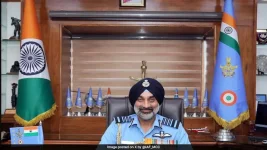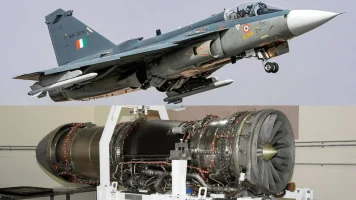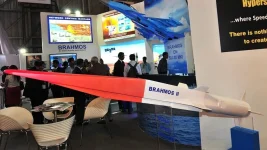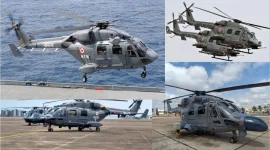- Views: 423
- Replies: 8
India's Defence Acquisition Council (DAC) is expected to soon approve a significant procurement of six Netra Mk1A Airborne Early Warning and Control (AEW&C) aircraft, a move aimed at substantially boosting the Indian Air Force's (IAF) surveillance and command capabilities.
The decision, announced on May 27, 2025, involves acquiring airframes from Brazilian aerospace firm Embraer, which will then be modified by the Defence Research and Development Organisation’s (DRDO) Centre for Airborne Systems (CABS).
This project, valued at approximately Rs 9,000 crore, intends to triple the IAF’s current AEW&C fleet, addressing crucial needs in India’s air defence strategy, especially considering the prevailing regional security situation with China and Pakistan.
The Netra Mk1A represents an upgraded version of the indigenously developed Netra Mk1 AEW&C system. This earlier system has already demonstrated its effectiveness in critical situations, including the 2019 Balakot airstrike and the recent Operation Sindoor conducted on May 7, 2025.
The new Netra Mk1A, to be mounted on the Embraer ERJ-145 aircraft platform, will feature an Indian-made Active Electronically Scanned Array (AESA) radar. This advanced radar offers 240-degree coverage and an impressive detection range of about 450 kilometers, a substantial improvement over the 200-kilometer range of the original Mk1.
Furthermore, the system will be equipped with improved mission equipment, better operator interfaces, advanced data communication links, and a strong electronic warfare suite. These enhancements are designed to significantly multiply the IAF's capabilities in air defence, reconnaissance, and mission control.
Currently, the IAF operates three Netra Mk1 systems, with an additional unit used by CABS for research and development purposes. The introduction of six new Netra Mk1A aircraft will greatly enhance the IAF's ability to detect low-flying objects, track enemy aircraft, drones, and cruise missiles, and manage complex operations across different domains.
A senior IAF official highlighted the system's value, stating, “The Netra Mk1A’s deployment in Operation Sindoor showcased its flawless performance, validating years of indigenous development,” and emphasized its critical role in providing real-time awareness of the aerial situation.
As Embraer discontinued the production of the ERJ-145 regional jet over a decade ago, the IAF has tasked the Brazilian company, in partnership with India’s Adani Defence and Aerospace, to find suitable pre-owned airframes from the international market.
The ERJ-145 is a twin-engine jet known for its reliability, with a range of 2,873 kilometers, a cruising speed of Mach 0.78 (approximately 963 km/h), and a maximum takeoff weight of 22,000 kg. This aircraft model is already familiar to the IAF, as it forms the basis of the existing Netra fleet and is also used for VVIP transport.
Embraer will be responsible for making the necessary structural changes to these airframes to accommodate the AESA radar, operator stations, and other vital mission systems, ensuring they meet military operational standards.
CABS, as the primary agency for the Netra program, will oversee the integration of various indigenous systems. These include the AESA radar, electronic intelligence (ELINT) gathering equipment, and sophisticated data links.
These modifications will improve the Netra Mk1A's capacity to detect targets at altitudes ranging from 30 meters (approximately 100 feet) to 20 kilometers (approximately 65,600 feet), coordinate air operations, and connect with ground-based and airborne assets for network-centric warfare.
This approach strongly supports India’s ‘Aatmanirbhar Bharat’ (self-reliant India) initiative, which aims to increase self-sufficiency in defence technology and reduce dependence on foreign systems, such as the Israeli Phalcon AWACS currently operated by the IAF on IL-76 transport aircraft.
The urgency for this acquisition arises from India's need to address a significant shortfall in its AEW&C capabilities. This gap was particularly noticeable during the 2019 aerial engagement with Pakistan following the Balakot operation.
In comparison, Pakistan operates a larger fleet, reportedly consisting of nine Saab 2000 Erieye AEW&Cs and four Chinese ZDK03 Karakoram Eagle AWACS, which allow for continuous surveillance.
China also deploys over 30 AWACS, including the KJ-500, near Indian borders, further highlighting the necessity for India to enhance its airborne surveillance resources.
While the Netra Mk1A's 240-degree coverage is a significant step, future plans include the Netra Mk2, which will utilize Airbus A-321 airframes for 300-degree coverage, and the Netra Mk3, which aims for full 360-degree coverage using a dome-based AESA radar.
Air Chief Marshal Amar Preet Singh recently commented on the procurement, stating, “The six Netra Mk1A aircraft will nearly triple our AEW&C capacity, providing a faster deployment timeline compared to the Netra Mk2 program.”
The DAC's approval is anticipated in the coming weeks. Following this, the project will require final funding clearance from the Cabinet Committee on Security (CCS), after which a five-year timeline for the delivery of the aircraft is expected to commence.





